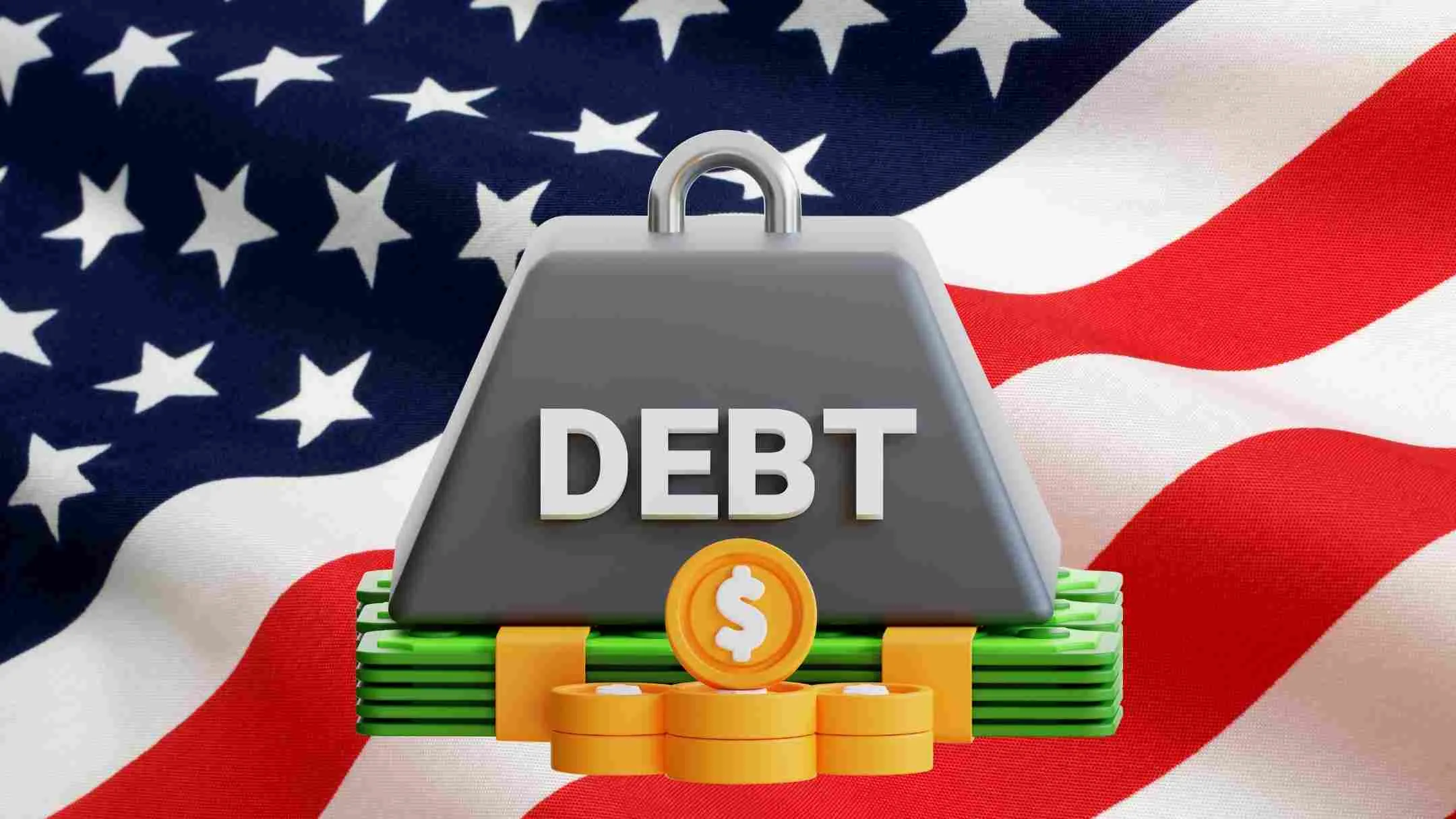The United States has reached a staggering national debt level of nearly $37 trillion, sparking renewed debate among economists, investors, and policymakers. With interest payments soaring and debt-to-GDP ratios climbing, many are asking: is this sustainable? Let’s break it down.
How Serious Is $37 Trillion?
As of mid-2025, the total federal debt has ballooned to approximately $36.8 trillion, projected to cross the $37 trillion threshold soon. This amount is now equivalent to around 123% of the U.S. Gross Domestic Product (GDP)—a figure that surpasses the nation’s debt levels during World War II. Forecasts by the Congressional Budget Office (CBO) suggest this ratio could exceed 130% in the coming decade if no policy adjustments are made.
Why It Matters: Key Risks to Watch
1. Mounting Interest Payments
With interest rates rising, the U.S. government is expected to spend over $1 trillion annually just to service its debt. This amount now rivals or exceeds the defense budget. If borrowing continues at this pace, the interest burden could crowd out critical spending on healthcare, infrastructure, and education.
2. Slower Economic Growth
As more capital flows into government debt instead of private investments, economists warn that productivity and wage growth may suffer. Studies show that rising national debt could reduce long-term GDP by over 1% by 2035, potentially resulting in millions of fewer jobs.
3. Inflation and Fiscal Imbalance
When governments run large deficits, central banks may face pressure to keep rates low to manage debt servicing. This condition, known as fiscal dominance, can undermine inflation control, making monetary policy less effective and inflation harder to contain.
4. Impact on U.S. Credit and Global Confidence
In 2024, Moody’s lowered the U.S. credit outlook, signaling doubts about fiscal discipline. A declining credit rating can lead to higher borrowing costs. If investor confidence weakens, Treasury yields could spike, destabilizing both domestic and global markets.
5. Pressure on the U.S. Dollar
Persistent deficits and rising debt may erode confidence in the U.S. dollar. While still the world’s reserve currency, continued fiscal indiscipline could encourage investors to diversify away from dollar-denominated assets, putting downward pressure on the currency over time.
Expert Opinions: What Economists and Analysts Are Saying
Billionaire investor Ray Dalio has warned of a scenario where an oversupply of Treasury bonds meets weakening demand, leading to higher inflation and a drop in the dollar’s value.
Fiscal policy researchers have cautioned that unchecked spending could inflate the debt by another $6 trillion within a decade, substantially increasing interest costs.
Think tanks like the Cato Institute and the Peter G. Peterson Foundation are calling for bipartisan reforms to address the structural drivers of deficits.
Why the U.S. May Still Have Breathing Room
Despite the grim outlook, the U.S. retains key advantages:
The dollar remains the global reserve currency, ensuring strong international demand for U.S. Treasuries.
A significant portion of the debt is held domestically, including by government trust funds and American investors, which cushions the risk of foreign sell-offs.
Historically, investors still see U.S. bonds as safe during global crises, maintaining relatively low borrowing costs even amid large deficits.
Is There a Way Out? Potential Solutions
To stabilize the debt trajectory, experts recommend:
Spending restraint: Reducing unnecessary subsidies, restructuring entitlement programs, and cutting redundant expenditures.
Revenue enhancements: Broadening the tax base, eliminating loopholes, and improving collection efficiency.
Comprehensive reform plans: Initiatives like the bipartisan Simpson-Bowles framework, which suggested a mix of tax reforms and spending cuts, are often cited as viable starting points.
Delaying action will only make these measures more politically and economically painful.
So, Should We Be Worried?
Category | Short-Term Outlook | Long-Term Risk |
Economic Growth | Manageable | Slower if debt trend continues |
Fiscal Stability | Stable but tightening | Potential crisis if ignored |
Investor Confidence | High, but declining signals | At risk with persistent inaction |
Global Position | Dominant but vulnerable | Challenged by fiscal imbalance |
While there is no immediate fiscal catastrophe looming, the long-term trajectory is unsustainable without meaningful intervention. The U.S. has time—but not unlimited time—to reverse course.
Bottom Line
The $37 trillion U.S. debt milestone should be a wake-up call, not a cause for panic. There remains a window for reforms, but it is narrowing. Sustainable fiscal policy is essential to preserving America’s economic leadership, financial flexibility, and national security.
What You Can Do as a Citizen or Investor
Stay informed: Follow debt reports from the CBO, Treasury, and Fed.
Engage: Advocate for fiscal responsibility with elected representatives.
Diversify: In volatile fiscal times, consider inflation-protected securities and global diversification for your portfolio.


